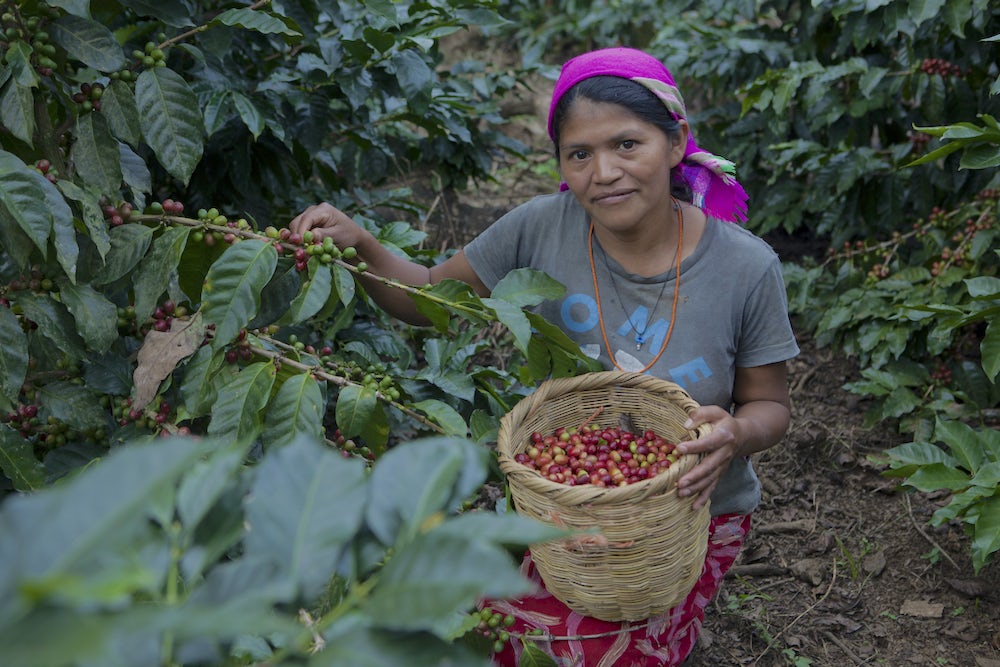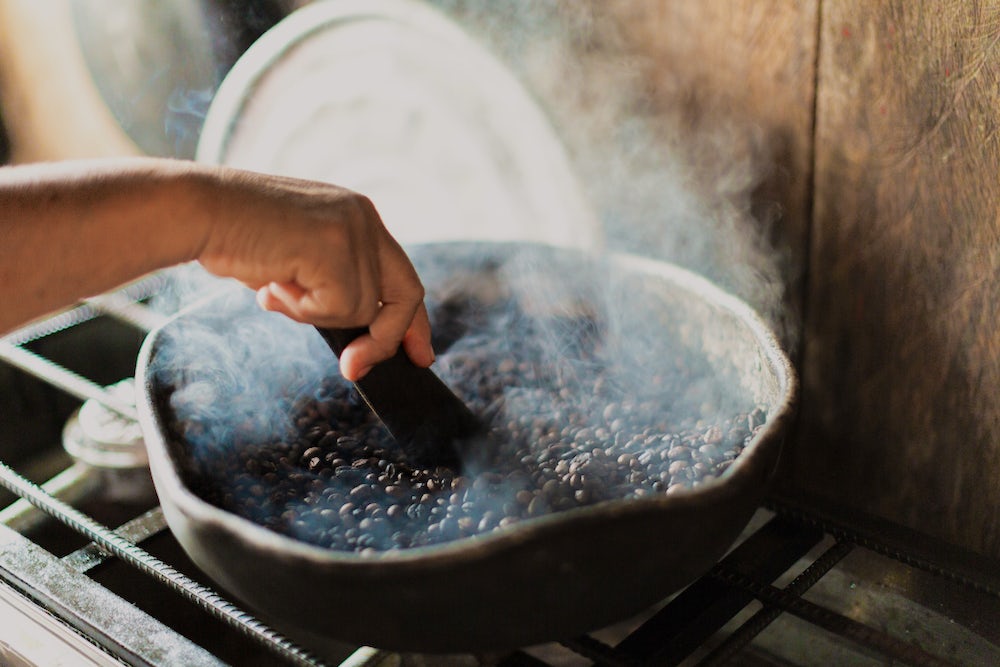Addressing systems of social, economic and environmental oppression is intrinsic to Heifer International’s work. As an organization, we strive to end hunger and poverty while caring for the Earth. But we must remember that poverty is not an accident. When specific groups of people experience similar forms of socio-economic marginalization, that is by design.
In this series, we are exploring the intersection of historical racism and agricultural development, examining the impact on Black, Indigenous and people of color to contextualize how hundreds of years of horrors continue to shape and influence the lives of the families with whom we work.
Previously, the series examined the history of oppression in the coffee industry.
Given the plight of present-day coffee farmers, one might assume the coffee business is largely unprofitable, perhaps plagued by razor thin margins and floundering demand. Nothing could be further from the truth. Globally, the industry is valued at more than $200 billion. However, less than 10% of that aggregate wealth stays in producing countries, and only 5 to 7% makes it to the farmers themselves. Much of the rest goes to wealthy companies and their executives, who are almost exclusively based in North America and Europe. As you might expect, the seeds of colonialism have borne unequal fruits; while so many suffer from systemic poverty traps and intense marginalization, history’s winners continue to prosper. “Capitalism rests on the work, endeavors and exploitation of non-White people,” said Edward Baptist, professor of history at Cornell University. “And so [do] some of the assumptions about who gets to participate in what level of the economy, who gets to make decisions and who gets to move in those kinds of innovative spaces.”

As prices paid to farmers have steadily declined, what consumers pay for coffee has soared. Between 1996 and 2018, the average retail cost of a 16-oz. bag jumped from $4.04 to $9.67 and cost of a cup from $1.25 to $1.94. That would be fine if it followed a trend of larger returns passed to deserving producers, but that’s not the case. In 2011 Starbucks spent $1.1 billion on 367 million pounds of unroasted coffee; last year they spent $1.1 billion on 650 million pounds. That’s 44% more coffee purchased for the exact same price.
If you bought a Grande Latte later today, you would probably pay around $3.65. The farmer responsible for those beans would receive $0.02 or $0.03 of that. Considering that the sleeve around that cup costs $0.05, the takeaway is that a small piece of cardboard is more valuable than the farmer’s work. This becomes even more apparent when you look at the bottom line: Starbucks earned $26.5 billion last year, while all the world’s coffee farming recipients combined — all 125 million of them — earned around $22 billion. As time marches on, more and more industry value is being taken away from Black, Indigenous and people of color in order to fill the wallets of white millionaires.
Beyond the financial disparity, there is a notable lack of representation in the coffee industry, with Black, Indigenous and people of color seemingly regulated to production while those of European lineage fill the lucrative and prestigious roles. For example, Starbucks reports a mere 15% of its senior leaders as being people of color, a demographic representing 40% of the total U.S. population.

It’s also a rarity to see consumer-facing Black and Brown faces, especially in the higher-end roaster and barista ends of the business. “When you go to these [specialty cafés], you have Ethiopian coffees or you have the Kenyan coffee, you have coffee from Honduras,” said Cydni Patterson, a barista at People’s Coffee in Durham, North Carolina. “And then you look behind the bar, and there’s nobody from there.” When the faces of people of color are prominent in the coffee narrative, it’s often as a selling point. Pictures of smiling farmers on the back of bags or café walls serve as proof of the roasters’ connection with the growers, implying a trusted and respectful relationship where both parties benefit. What these one-dimensional photos don’t show is the lack of information sharing from buyer to seller (although the reverse is mandated), absence of negotiating power farmers have in the sale price, or the marketing value these images generate for the company. Ultimately, it’s another form of treating people as objects — with a farmer’s face slapped on a website, not as a key stakeholder in the farm-to-cup process, but as another passive data point alongside elevation and tasting notes.
What Heifer Is Doing
All of our work in coffee hinges on farmers collaborating to gain more control over, and ultimately more profit from, what they produce. This includes supporting improvements in yield and quality, as well as diversifying crop production to lessen reliance on coffee. Heifer works along all stages from seed to sale, helping producers organize into cooperatives, add value to their product, adopt strong management practices and improve bargaining power. The organization adheres strictly to agroecological farming practices, ensuring production regenerates the land and bolsters biodiversity while minimizing expenses.

However, none of it is enough. With coffee’s broken system that relies on cheap labor to thrive, more direct action around livable, equitable prices is necessary. That’s why we are in the midst of organizing a consumer movement to ensure companies start paying farmers fairly. We’ll need people like you, who want to buy ethically and care about social justice, to help spread the word!
What You Can Do
Changing a system deeply entrenched in hundreds of years of oppression won’t happen overnight, but your actions can move the industry toward lasting change. Here are a few simple things you can do to start.
Additional Material
If you’re interested in learning more about race and coffee, start here:
“Slavery & Specialty: Discussing Coffee’s Black History,” Perfect Daily Grind: https://perfectdailygrind.com/2019/03/slavery-specialty-discussing-coffees-black-history/